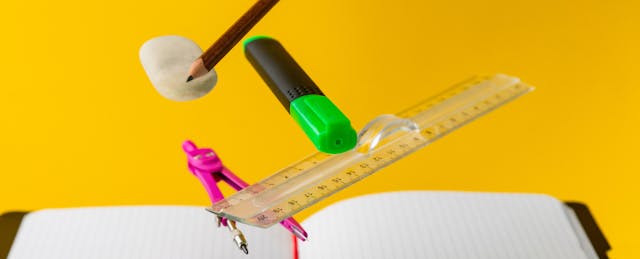I’m seated at my fake-wood desk in Ms. Glaser’s second grade classroom. My yellow #2 pencil is newly sharpened and the timer is set. Begin! 60, 59, 58….I shout the problems in my head: “five plus 8” “five plus 8” “five plus 8!” Tick tick tick...my mind is a large block of ice. I take deep breaths to try and stay focused. This is a Monday morning Mad Minute. I’m working as fast as possible to answer as many math questions as I can in 60 seconds.
Raise your hand if this description sounds familiar. I thought so. Are your memories of the Mad Minute positive? Probably not. In my experience as a middle and high school math specialist, I’ve rarely heard any adults (including math teachers) report many positive memories of their early experiences with math at school. Why?
The problem isn’t with timed retrieval practice exercises like the Mad Minute. In fact, there is a great deal of research support for consistent retrieval practice and self-testing to build automaticity with number facts. The problem is that by the time I was 8-years-old, math was already associated in my mind with fear, shame and anxiety. I didn’t want the Mad Minute to reveal what I believed to be true: I was an imposter of a good math student; I had not been born “a math person.”
Part of the reason for the high rates of math anxiety is that math in the United States is viewed largely as a talent that one is either born with or not. It is the ultimate example of Carol Dweck’s “fixed mindset,” where math ability is viewed as a fixed entity that cannot be improved with practice. As a result, it is widely acceptable (and sometimes lauded) to self-identify as “not a math person” and simply opt-out of trying to gain confidence with quantitative fluency. I’m not talking about people choosing not to study calculus. I mean that college-educated adults often balk at estimating a 20 percent tip without a calculator. As many educators have said to me with a rueful laugh, it would not be acceptable at a restaurant to say that you weren’t really a “reading person,” and could someone please read the menu for you.
Unfortunately, this discomfort with math is widespread in the general population and women tend to report higher math anxiety than men. It is true of parents and it is true of teachers. In fact, elementary school educators have some of the highest levels of math anxiety compared with other fields of study. In a particularly jarring study by Sian Beilock, girls in first and second grade classrooms with female teachers high in math anxiety had lower achievement in math and held more stereotyped beliefs about girls' abilities. More than 90 percent of elementary school teachers are female. Thus, math anxiety greets our students as soon as they enter school.
Math anxiety is a corrosive agent in the STEM talent pipeline. Contrary to what might be expected, it disproportionately affects high-ability students who default from efficient mathematical strategies that rely on working memory to less-efficient ones. Imagine a student who has memorized an algorithm for finding the slope of a line from two points. Under pressure, they forget the shortcut, and resort to counting the rise and run based on a graph. Math anxiety hurts those who have the most to lose. Due to our cultural stereotypes about who is naturally gifted in math, the students most likely to “choke” under pressure are talented girls and students of color.
This problem is highly intransigent because it is largely based on cultural stereotypes that are passed from adults to children and are difficult to change. However, there are a number of specific interventions that are supported by research:
- To counter the idea that math is a fixed ability, we must be cognizant of how we speak about math, particularly around young children. As parents and teachers, we can talk about math with curiosity, interest and excitement. We can count snowflakes and people at the holiday dinner table. We can catch ourselves before we say, “Oh, I hated math in school!” to a child who looks up to us. We can model how to figure out a math problem with our children when we don’t know where to begin.
- To bolster early elementary math instruction, we must train and employ elementary school math specialists. As Beilock’s research indicates, it is imperative that elementary school students have math teachers who are excited and equipped to teach math. We must invest in staffing these positions.
- To chip away at the stereotypes that drive people away from math, we can de-emphasize math as a competitive and speed-driven sport. Practice tools like the Mad Minute can be used more privately to build automaticity with number facts. We can make learning math a more collaborative, problem-based and community-focused experience.
- To address the negative emotions that sometimes accompany math, we can normalize math anxiety as a common feeling that doesn’t have to dictate decisions. We can teach students to use reappraisal techniques to harness anxiety as a form of energy that can fuel their hard work and improvement.
- To ensure mastery, we can hold our students to high standards by believing that everyone is born capable of mathematical reasoning. This claim is supported by exciting work that points towards a specific region of the human brain dedicated to numerical processing.
Math anxiety is a drain on our collective enthusiasm for learning and growth. This New Year, let’s resolve to take this educational inflection point as an opportunity to rebrand mathematical reasoning as an incredible tool with which every single human brain is born.


